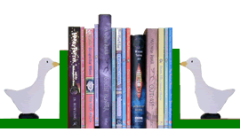Traditional publishing involves printing a large quantity of books at once (called a print run), storing them in a warehouse and sending them out in response to orders from bookshops and wholesalers. For years, this was the way the book business worked and self-publishing involved either finding a distributor for your books or, more likely, storing boxes of books in the garage or under your bed and queuing at the post office to send them out in ones or twos.
The arrival of digital printing made shorter print runs more feasible, which meant you didn’t have quite as many books to store, and it also introduced a completely new alternative: print-on-demand (POD). Under this system, the files that make up your book are stored on a computer. When an order comes in, a copy of your book is printed and sent out direct to the customer.Print-on-demand is brilliant for self-publishers. There are no books to store, no money tied up in stock and no more queuing at the Post Office. Even if you are mainly expecting to sell ebooks, POD allows you to offer a paperback as well at minimal cost so you have physical books available for reviewers and for the gift market. (Ebooks are great, but you can’t wrap them up.)
Createspace is Amazon’s own POD system and well worth considering because it is user-friendly and produces good quality books that are automatically listed as in stock on Amazon. As long as you provide your own pdf files for the cover and the interior (made by you or someone you’ve hired), Createspace charges you nothing for putting the book on their system. There is also no charge for changing the file later when you’ve spotted the inevitable typo that slipped through the net. You will have to pay for a printed proof, but that’s a good investment to make sure everything is okay before you put the book on sale.
There are plenty of other POD suppliers and one of the biggest is Ingram Spark: the self publishing arm of Lightning Source. They charge set-up fees, but they sell to wholesalers and retailers worldwide so they provide you with the ability to say “available from all good bookshops”. Using Createspace for Amazon sales and Ingram Spark for everything else is a popular choice for indie authors because it gives you wide distribution plus “in stock” availability with Amazon. However, that’s only possible if you use your own ISBN – not one supplied by Createspace.
Diana Kimpton
